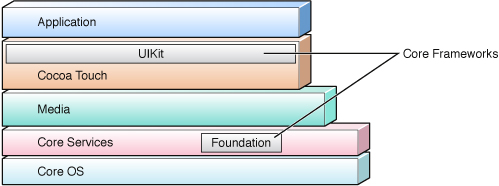Introduction
Encountering errors during software development can be a daunting task, especially when the error message isn’t entirely clear. One such error is related to NSCocoaErrorDomain with the error message “Could not find the specified shortcut” and error code 4. This article aims to provide a comprehensive understanding of this error, its potential causes, and how to resolve it.
What is NSCocoaErrorDomain?
Overview
NSCocoaErrorDomain is a domain in Apple’s macOS and iOS development environments that encompasses a variety of errors. These errors are related to Cocoa and Cocoa Touch frameworks, which are essential for app development on these platforms.
Common Error Codes
The NSCocoaErrorDomain includes numerous error codes, each indicating a specific type of issue. Some common error codes include issues related to file handling, data persistence, and user interface elements.
Understanding the Error Message
Breakdown of the Error Message
The error message “Could not find the specified shortcut” accompanied by error code 4 in the NSCocoaErrorDomain typically indicates a problem with locating a specified shortcut within the system or application. Here’s a detailed breakdown:
- errordomain=nscocoaerrordomain: Indicates the error is within the NSCocoaErrorDomain.
- errormessage=could not find the specified shortcut: The system or application couldn’t locate the referenced shortcut.
- errorcode=4: A specific identifier for this type of error within the NSCocoaErrorDomain.
Contexts in Which This Error Occurs
This error can arise in various contexts, such as:
- Accessing user-defined shortcuts.
- Navigating to application-specific shortcuts.
- Handling file paths or URLs within an app.
Common Causes of the Error
Missing or Deleted Files
A common cause is missing or deleted files that the shortcut refers to. If a file or resource has been moved or removed, the system will be unable to find it.
Incorrect Shortcut Paths
If the shortcut path is incorrectly specified within the app, this error can occur. This might involve typographical errors, incorrect directory structures, or outdated paths.
Permission Issues
Insufficient permissions can prevent the app from accessing certain shortcuts, leading to this error. This is common in scenarios where the app lacks the necessary read or write permissions.
Application Bugs
Bugs within the application code that handles shortcuts can also cause this error. This might include issues with how shortcuts are defined, stored, or retrieved.
Diagnosing the Error
Step-by-Step Diagnostic Process
- Verify File Existence: Check if the file or resource the shortcut points to actually exists at the specified path.
- Check Shortcut Definitions: Review the code or configuration files where shortcuts are defined to ensure accuracy.
- Evaluate Permissions: Ensure the application has the required permissions to access the file or resource.
- Inspect Application Logs: Look at application logs for additional context or specific error details that might point to the root cause.
Tools for Diagnosis
- File System Browsers: Tools like Finder on macOS can help verify file existence and paths.
- Permission Checkers: Use system settings or command-line tools to verify and modify permissions.
- Logging Tools: Use logging frameworks to capture detailed error information within the application.
Solutions to Resolve the Error
Restoring Missing Files
If files have been deleted or moved, restore them to their original locations. Ensure the paths in the shortcuts are updated if the files have moved.
Correcting Shortcut Paths
Update the application code or configuration to correct any errors in the shortcut paths. Ensure the paths are valid and correctly formatted.
Adjusting Permissions
Modify the application’s permissions to ensure it has the necessary access. This might involve changing file permissions or updating app entitlements.
Debugging Application Code
Review and debug the application code related to shortcut handling. Ensure there are no bugs or logical errors causing the issue.
Preventing Future Errors
Implementing Robust Error Handling
Incorporate error handling mechanisms to gracefully manage missing or inaccessible shortcuts. Provide clear error messages and potential resolutions for users.
Regular File Audits
Conduct regular audits of files and shortcuts to ensure all references are valid and up-to-date. This helps in early detection of potential issues.
Thorough Testing
Implement comprehensive testing strategies, including unit tests and integration tests, to cover scenarios involving shortcuts. This ensures any issues are caught early in the development cycle.
Conclusion
Understanding and resolving the NSCocoaErrorDomain error code 4 with the message “Could not find the specified shortcut” requires a systematic approach. By diagnosing the root cause, applying the appropriate solutions, and implementing preventive measures, developers can ensure a smoother and more robust application experience.
FAQs
1. What does error code 4 mean in NSCocoaErrorDomain?
Error code 4 in the NSCocoaErrorDomain indicates that the system could not find the specified shortcut. This typically means the file or resource the shortcut points to is missing or inaccessible.
2. How can I resolve a missing file issue?
To resolve a missing file issue, restore the file to its original location or update the shortcut path to point to the new location of the file.
3. What should I do if the shortcut path is incorrect?
Correct the shortcut path in the application code or configuration files. Ensure the path is accurately specified and points to the correct location.
4. How can permission issues cause this error?
If the application lacks the necessary permissions to access the file or resource, it will trigger this error. Adjusting file permissions or app entitlements can resolve the issue.
5. What steps can I take to prevent this error in the future?
Implement robust error handling, conduct regular file audits, and thoroughly test the application. This helps in early detection and resolution of potential issues involving shortcuts.
6. Can this error be caused by application bugs?
Yes, application bugs related to how shortcuts are handled, defined, or retrieved can cause this error. Debugging and reviewing the application code can help identify and fix such issues.
7. What tools can I use to diagnose this error?
You can use file system browsers, permission checkers, and logging tools to diagnose this error. These tools help verify file existence, permissions, and provide detailed error context.
8. How important is regular testing in preventing this error?
Regular testing, including unit tests and integration tests, is crucial in preventing this error. It ensures that any issues with shortcuts are caught and resolved early in the development process.
9. What should I do if I encounter data corruption causing this error?
Addressing data corruption might involve restoring from a backup, repairing the application, or reinstalling the system software if necessary.
10. How can robust error handling improve user experience?
Robust error handling ensures that the application can gracefully manage missing or inaccessible shortcuts. It provides clear error messages and potential resolutions, improving the overall user experience.

